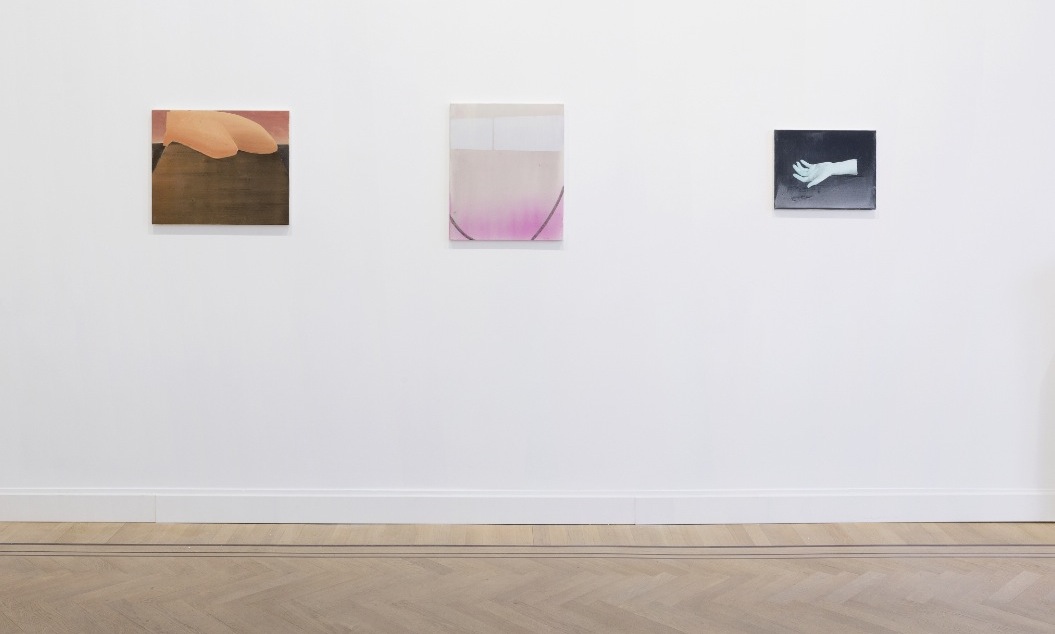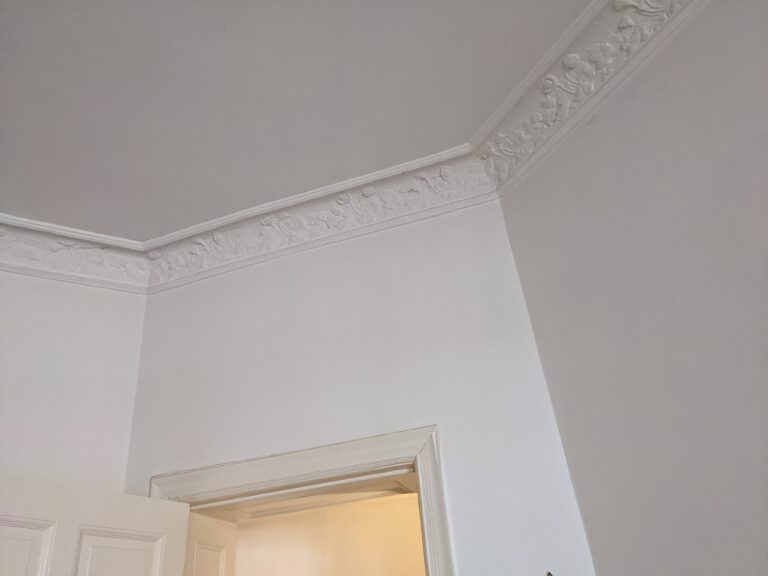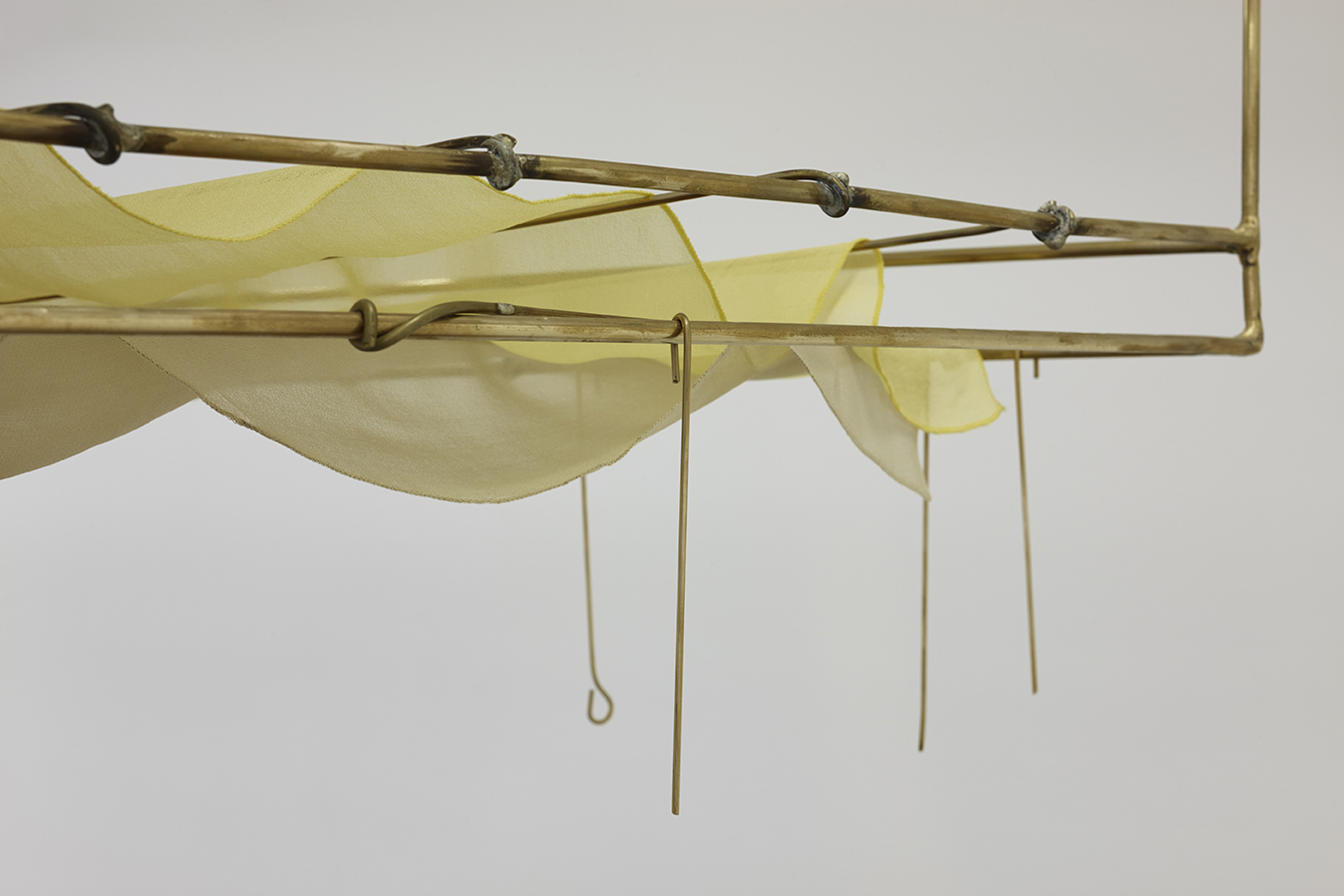The compelling nature of Ciarán Murphy’s work hit me at the moment it first caught my eye. That occurred in 2009 when I stopped in to view March, the solo exhibition presented at Mother’s Tankstation in Dublin. Tension flowed from his representations, which consisted of a set of disconnected scenes depicting bleak landscapes and wildlife in agitated states. This was largely fueled by Murphy’s incisive use of biting yellows, greys, reds, and blues, hues that effectively evoked the aura of panic, sting of toxic fog, and the sudden onset of other kinds of peril. The exhibition’s layout and the work’s broad range of sizes undermined cursory inspection. While small works drew people to them, large ones demanded a much a greater viewing distance. Such changes in scope spurred consideration on the possible meanings of the paintings and the potential nature of the relationships between them. Though the results proved provisional, this absence of clarity – a taunt or kind of game – piqued interest and set the work apart.
Works presented in subsequent exhibitions at the Douglas Hyde Gallery in 2010 and 2013 evidenced shifts in both tonality and scale. While Murphy’s palette encompassed a comprehensive array of hues, scaling back the use of the most intense pigments contributed to an unexpected air of restraint in the compositions. This, along with a reduction in the average size of the canvases, which introduced a measure of regularity, induced the paintings with an undeniable low-key presence. No longer did the images jump out at viewers or engage them in a choreography reminiscent of tidal flow. Instead, they hung reticently waiting to be studied. Like cryptic jewels, they invite viewers to meditate on their many nuances.
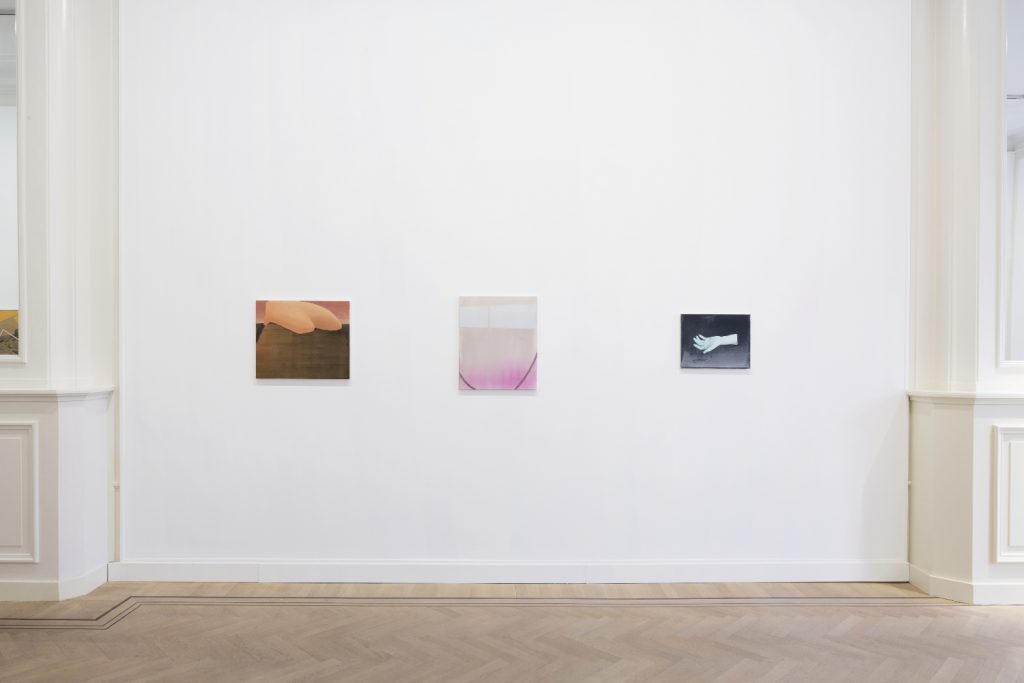
Ciarán Murphy
Plainsight, Grimm Gallery
© Sonia Mangiapane
Courtesy of the artist and Grimm Gallery
Now, fast-forward to Amsterdam and Murphy’s latest exhibition at Grimm Gallery (14 January–24 February 2018), an anniversary show that marked the artist’s tenth year with the gallery. Eleven small to medium-small canvases were presented under the rubric Plainsight. Like the work he has produced over the years, the title is enigmatic. Is it intended to refer to something obvious, in other words, the paintings that hung in the gallery? Walk in and you’ll find them to be right under your nose. Or is it more about playing with words – and pictures, for that matter? This could also be the case, especially if he rearranged the phrase ‘in plain sight’ to form a compound word that could also be read as ‘play in sight’. Again, there are no sure-fire answers.
As to the paintings themselves, they comprise a compendium of genres and techniques. Here there are references to landscape, abstract compositions, architectural structures, a book, and the human body. One work also employs a short, fragmented text, two pictures feature insects, and on some canvases genres have been conflated. U-bend (2017), for example, which normally refers to the type of pipe found under a sink or toilet, depicts a book open to a page holding two similar and semi-abstract images of what seems to be curves in a river. With the images stacked one above the other on the right side of the picture, one might expect the composition to feel lopsided, but that doesn’t happen because of work’s structure. The different sizes of the book pages, scale, and colour of the outlying borders and the touches of corresponding colours Murphy has inserted at the edges of the object, stabilise the overall structure. Colour and design also strongly influence L 12 (2017). A set comprising one white and four ochre shapes designate a special area of an arid landscape, but their meaning or purpose remains unclear.
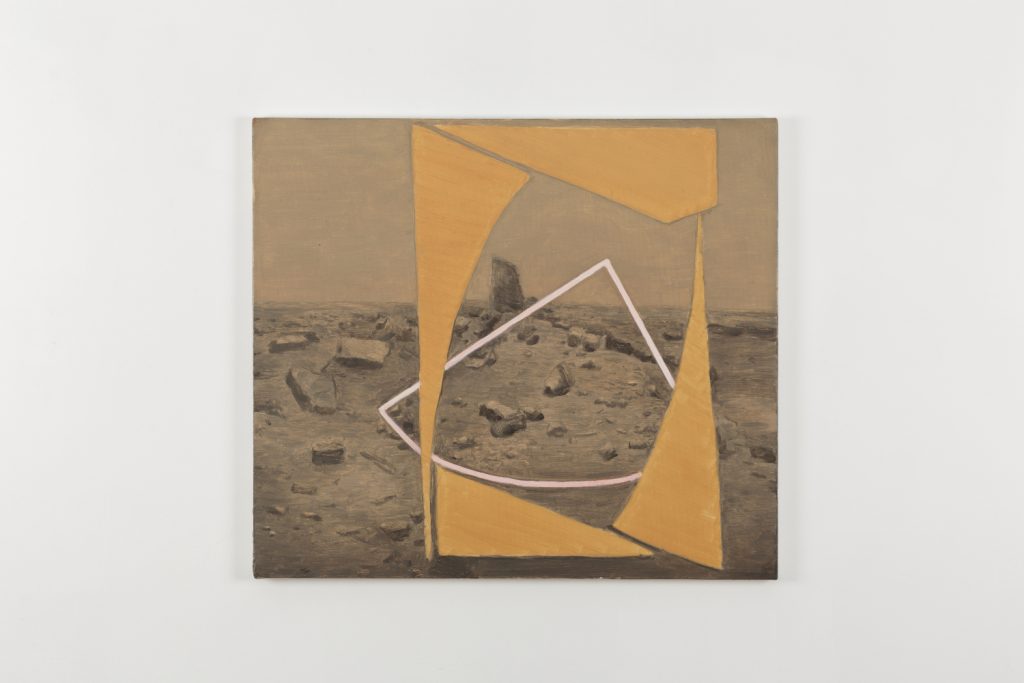
Ciarán Murphy
L 12
2017
Oil on linen, 70 x 80 cm
Courtesy of the artist and Grimm Gallery
The way Murphy applies colour appears uninspired in some works and haphazard in others. Yet, he somehow manages, through the simple and consistent act of brushing up and down, then back and forth, to make Formation (weeper) (2017) glow. The work is an impressive mystical landscape. In contrast, the application of paint in the equally mysterious Firecraft (2017) is extremely uneven, fails to properly cover the surface in places and happens to be riddled with unattractive textures. Surprisingly, these features don’t distract, but coalesce. They, in essence, help define the work. Murphy comes across as a restless spirit. Never satisfied with a single method, the paint in his images has been stippled, applied by roller, brushed, layered, scratched, scraped, stenciled, and shaped through the application and removal of tape.
Perhaps the most alluring aspect of these compositions is their sense of disconnectedness. The works tend not to relate to each other, nor do the subjects reside comfortably in the spaces in which they have been set. Consider Wait inside (2017), for example. The title – one cannot be sure whether it is intended to be instructive or commanding – appends a black, chunky, and vaguely architectural form set within a frame of pale pink. The conglomeration that floats over a bundle of blue and blue-grey noodles loop around within the confines of a lighter blue, potentially aqueous, space. There is no way to be sure but Wait inside could refer to the noodles or something inside the architectural shape. Despite this fact, the abstruse interplay of elements, their shapes and colour do not fail to intrigue.
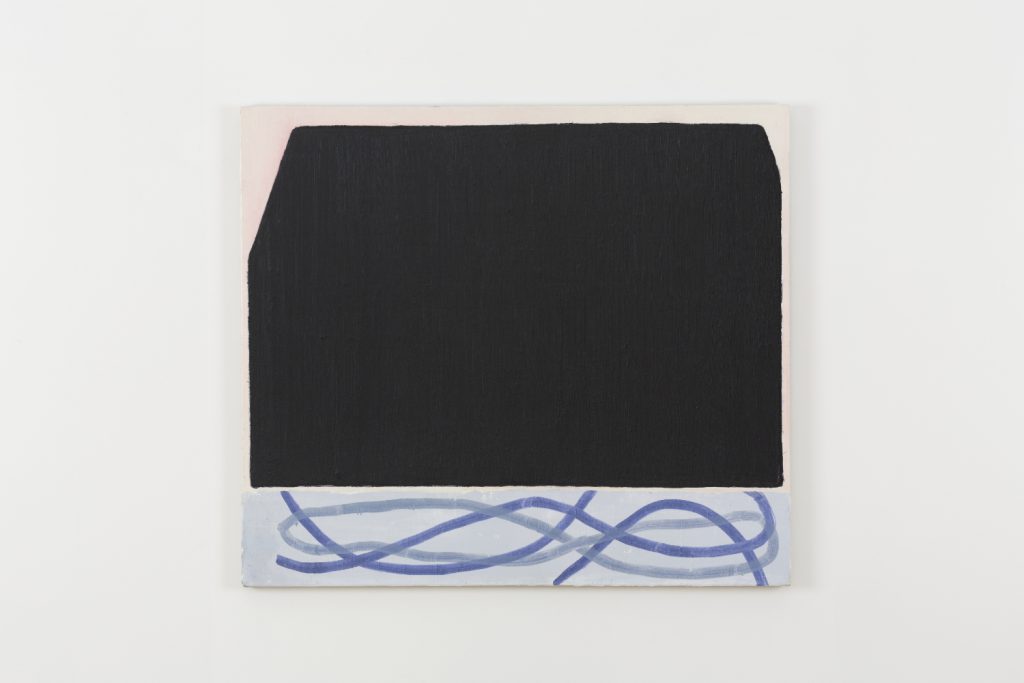
Ciarán Murphy
Wait inside
2017
Oil on linen, 70 x 80 cm
Courtesy of the artist and Grimm Gallery
One might expect that a straightforward title like Hand/Wrist (2017) would be far less baffling, but it also falls desperately short of clarifying what the painting portrays. The minty blue-green appendage, inexplicably severed from its body, hovers between nightmare and dream. It may be gesturing, but for what reason and to whom? Equally compelling is the letter parade presented in Double spacing (2017). They suggest a senseless LED readout or the double interval, which functions as an ode the military formation involving lateral space. Making reference to the painting process stands as another option. Having been hollowed out of the thicker background coating, Double spacing might be referencing the presence of two distinct layers of paint.
In most cases, the increased study of art objects engenders an appreciation of the artist’s materials and techniques, discloses a works’ subtleties and, by parsing the information embedded in their visual matrices, effect comprehension, at least on some level. Murphy’s obstinate little works, on the other hand, effectively stymie analysis. Prolonged viewing only reveals inconsistencies and contradictions, which give rise to more and more questions. This complexity exposes itself only gradually, but when it does it confounds to discover that so much of what paintings seem to be about lies beyond reach.
In some respects, these paintings recall train travel, especially as it forces travelers to sit in a window-lined space. These glass panels simultaneously function as apertures and mirrors, in which views of external vistas are overlaid with reflections of interior spaces and further jumbled by the rebounding of reflections of reflections. This light-dependent phenomenon presents fleeting new and sometimes much altered perspectives of the travelers’ surroundings and it works to distance them from it too. At once vivid, peripheral, and evanescent, such obviously complex occurrences frustrate recollection. They live on as fragmented images, just a few impalpable impressions that linger in the mind.
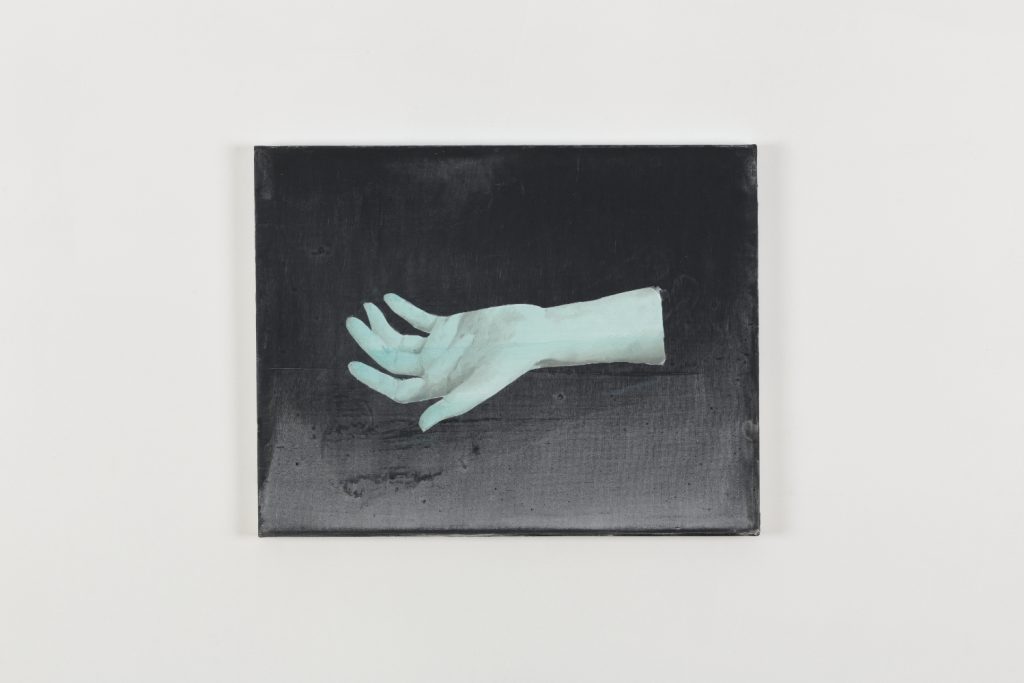
Ciarán Murphy
Hand/Wrist
Oil and acrylic on canvas, 35 x 45 cm
Courtesy of the artist and Grimm Gallery
And these circumstances may just be what Murphy is getting at. He seems to relish exploring life’s intangibilities and, over the years, has proved that he is only becoming more competent in the execution of that task. His visualisations are impeccable for the way they represent things that evade precise definition. So, it is, perhaps, time to be more accepting of those multiple questions the paintings generate, for they are part and parcel of the viewing experience. Furthermore, it is also time to conclude that the exhibition’s title likely involves no wordplay. Let’s, in fact, flip the idea that each painting is an inscrutable puzzle and propose an alternative. It could be that with each outing Murphy does his best to put all he can in plain sight on those canvases. That may be unsettling, but it also an endemic aspect of life. Perhaps that is the work’s most salient point.
John Gayer is an artist who also writes about art. In addition to Paper Visual Art Journal, his writing has appeared in Sculpture Magazine, this is tomorrow Contemporary Art Magazine, and elsewhere. More of his writing can be found on: johngayer.weebly.com

